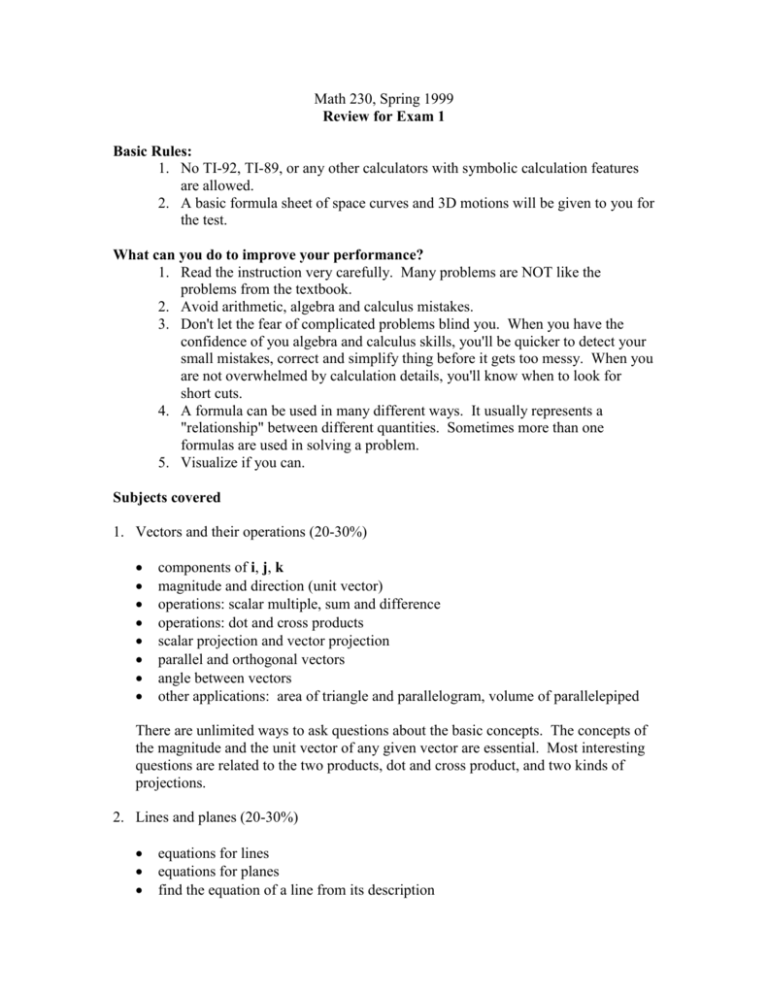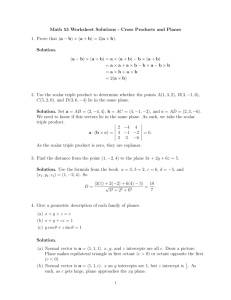Exam 1 Review - courses.psu.edu
advertisement

Math 230, Spring 1999 Review for Exam 1 Basic Rules: 1. No TI-92, TI-89, or any other calculators with symbolic calculation features are allowed. 2. A basic formula sheet of space curves and 3D motions will be given to you for the test. What can you do to improve your performance? 1. Read the instruction very carefully. Many problems are NOT like the problems from the textbook. 2. Avoid arithmetic, algebra and calculus mistakes. 3. Don't let the fear of complicated problems blind you. When you have the confidence of you algebra and calculus skills, you'll be quicker to detect your small mistakes, correct and simplify thing before it gets too messy. When you are not overwhelmed by calculation details, you'll know when to look for short cuts. 4. A formula can be used in many different ways. It usually represents a "relationship" between different quantities. Sometimes more than one formulas are used in solving a problem. 5. Visualize if you can. Subjects covered 1. Vectors and their operations (20-30%) components of i, j, k magnitude and direction (unit vector) operations: scalar multiple, sum and difference operations: dot and cross products scalar projection and vector projection parallel and orthogonal vectors angle between vectors other applications: area of triangle and parallelogram, volume of parallelepiped There are unlimited ways to ask questions about the basic concepts. The concepts of the magnitude and the unit vector of any given vector are essential. Most interesting questions are related to the two products, dot and cross product, and two kinds of projections. 2. Lines and planes (20-30%) equations for lines equations for planes find the equation of a line from its description find the equation of a plane from its description relations between a point and a line relation between two lines (intersecting, parallel, and skew) relation between a point and a plane relation between a line and a plane relation between two planes angle between intersecting lines, a line and a plane, and planes distance between points, lines, and planes 3. Space curves and 3D motion (40-50%) position, velocity, speed, and acceleration unit tangent vector principal unit normal vector arc length and distance curvature and radius of curvature osculating plane, binormal vector, and normal plane tangential and normal components of acceleration











